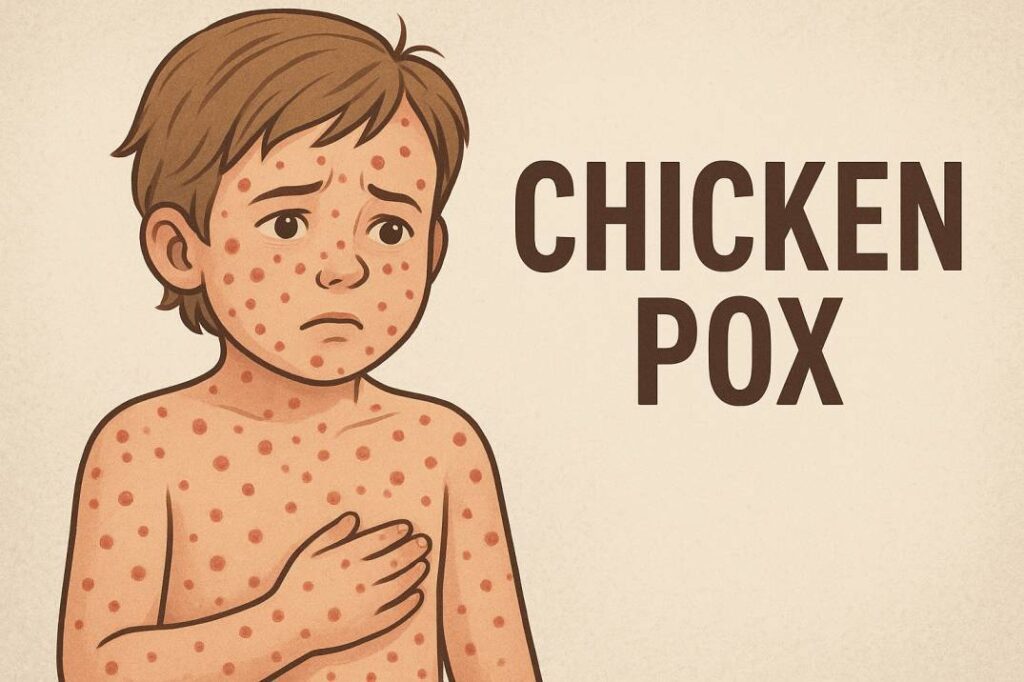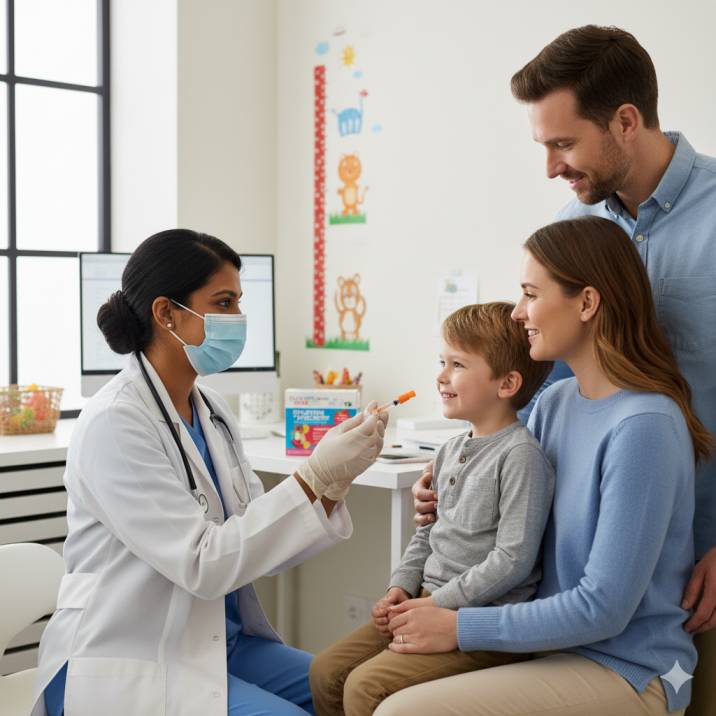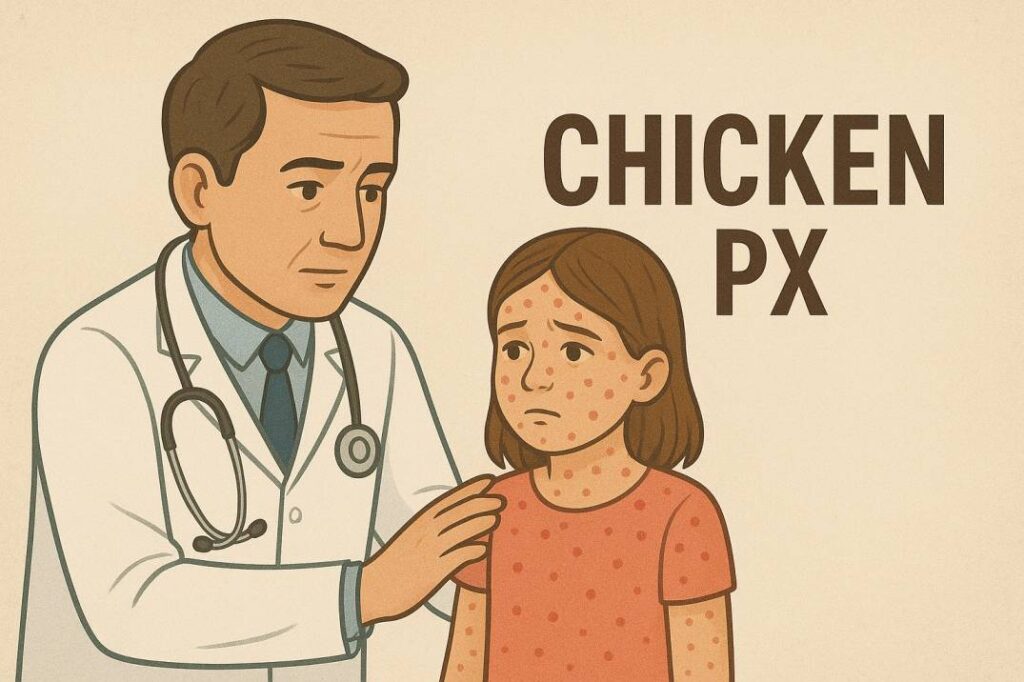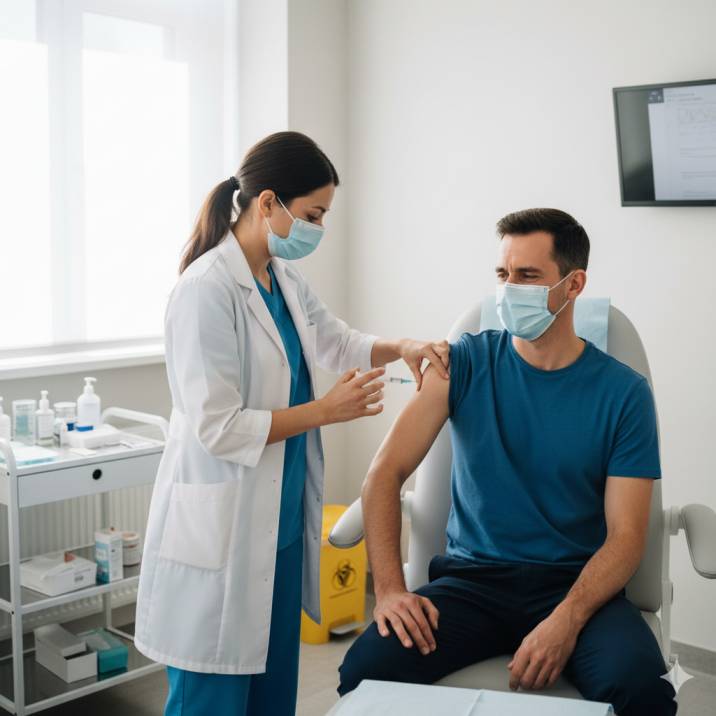Now let us start what is chicken pox. Chicken pox is called varicella in medical terms. It is the most common infection which is seen in the children. This infection is caused by varicella zoster virus (VZV), which belongs to the herpes virus family.
Although chickenpox is considered as a mid-illness, but sometimes it becomes complicated especially in adults, pregnant women, and people who have a weak immunity system. That’s why understanding the chickenpox symptoms is very important, because as I always tell in my blog that early detection help in proper management, reduce discomfort, and prevent spreading the infection to others. Now most of the people will think that how will chickenpox spread, then I tell you that chickenpox can be spread easily through cough, sneezing, or direct contacting with fluid from blisters, that’s why it is very contagious disease.
Many people are confused in chickenpox symptoms and smallpox symptoms and thinking that they both are same but they are completely different disease. There is a great news that smallpox has been eradicated completely from worldwide while chickenpox still exist, but it’s impact has greatly reduced because of the chickenpox vaccine. In this blog I will tell you everything about chickenpox symptoms, its causes, its treatment options, how can you prevent through vaccines, and how it’s different from smallpox.
Sources:
- Mayo Clinic – Chickenpox Causes & Overview
- Cleveland Clinic – Chickenpox Disease Page

Chickenpox Symptoms
Now, let us start with the, what are the symptoms of chickenpox. The early detection of symptoms is very helpful for controlling, preventing from spreading, and ensuring proper care
Early Symptoms of Chickenpox
Before the chickenpox rash appears on the skin, a person can easily detect warning signs. These warning signs come before 1-2 days rashes and chickenpox symptoms are :
- fever,
- headache,
- loss of appetite,
- tiredness and fatigue,
- general feeling of discomfort.
These symptoms are very common in flu that’s why many people take these symptoms as general flu or common cold. That’s why the parents of child have to be alert if their children is facing fever with the itchy rashes.
Rash Development in Chickenpox
Now let’s talk about the rash development in chickenpox, the rash is the most disturbing symptom in the chickenpox and it appears 10-20 days after the chickenpox virus comes in the body. There are different stages of rashes,
first, it first come in red spots, there you will see small red bumps on your face, chest, back before it spread to your whole body. Next blister, blister become the bumps quickly which turn into the fluid filled blisters. Then in third stage you will see bursting of blister, the blister will eventually open releasing fluid and causing intense itching. Fourth, scabbing, finally when the blister dry out and that forms scabs. These rashes are usually for 5-10 days but the person become contagious in 1-2 days before the rashes appear until all blisters have scabbed over.
Symptoms in Children vs. Adults vs Pregnant Women
Now, let us talk about how symptoms appear in children and as well as how symptoms appear in adults. Let’s first talk about how symptoms appear in children. Children usually feel mild symptoms such as low fever, fatigue, and rashes, but the recovery of children is very smooth. Now let’s talk symptoms in adults, in adults symptoms are very high with high fever, more blisters and great risk to the complications like pneumonia and anxiety disorders. Third, symptoms in pregnant women can experience serious complications and chicken pox virus has the ability to harm the baby if the infection occurs during pregnancy.
Severe Symptoms & Complications
Now let us talk about that what are the complication in chicken pox. While chicken pox is considered as a mid-virus which cannot lead to complication in most of the cases. But sometime it can lead to serious complication specially in high risk group. Before it goes to complication it gives warning symptoms such as high fever, difficulty in breathing or chest pain, severe cough, stiff neck or sensitivity to light, skin turning red warm or tender. People who are experiences these symptoms should run for immediate medical care.
Sources:
Mayo Clinic – Chickenpox Symptoms
Cleveland Clinic – Stages of Chickenpox Rash
HealthyChildren.org (AAP) – Varicella in Children
Complete Guide to Understanding Causes, Treatment, and Prevention
Chickenpox Causes
Now let us talk about what are the causes of chicken pox and why understanding the causes of chicken pox is crucial. Understanding the causes of chicken pox is crucial because it helps in prevention and awareness that how chicken pox spreads. I know that many people including me until I read articles on the internet, that chicken pox is a childhood disease and it is not existing anymore. But the truth is that anyone can catch chicken pox who have been not vaccinated or previously infected. The main cause of chicken pox is varicella zoster virus which is also called VZV. This virus belongs to the herpes family.
The herpes family is the same group of virus which is responsible for cold, sore and shingles. When people come in contact with this virus, it enters first through your respiratory tract and starts multiplying. After multiplying, it spreads through the bloodstream which causes destructive chicken pox rashes. Here is the bad news that once people recover from chicken pox, they think that we free. But the truth is that the virus does not leave your body completely, instead it becomes dormant in the nerve tissues. But later in life, it can be reactivated as shingles which is also known as herpes zoster.
How Does Chickenpox Spread?
Now this is the one of the most important part of our blog that how does chicken pox spread. As we all know that chicken pox is one of the most contagious viral infection. A person who have chicken pox can easily spread the virus in others.
First, through airborne transmission, when a person who is infected by the virus sneezes or coughs near you, then the tiny droplets which is spread by his/her sneeze or cough, can be inhaled and become infected. Second, through direct contact, if any person touches the fluid inside the chicken pox blister can also be infected by the person. Third, indirect transmission, if the person who is infected by the chicken pox touches any object then sometimes object become contaminated and if you touch that contaminated object, then it can spread the virus.
Chickenpox and Smallpox
Now let us understand that what is the difference between chicken pox and smallpox. This is the confusion which is running not from today, it is running from the history. In the early centuries, when there is no modern medical help was or laboratory testing is available, doctor often confused about whether the person is having a chicken pox or a smallpox. Because both the diseases produce the same rashes and blisters.
Both are highly contagious and both spread quickly in communities. However, sometimes scientists also identified that smallpox is caused by the variola virus while chicken pox is caused by VZV. The key difference in chicken pox and smallpox is chicken pox belongs to VZV and smallpox belongs to variola virus. The rashes in the chicken pox appear in waves, spots, blisters, scabs at the same time but the rashes appear in the smallpox develops uniformly. Chicken pox rashes appear first on face, chest, and back whereas smallpox rashes appear on face and spread to the arms and legs.
Chickenpox Treatment
Home Remedies for Chickenpox Relief
There are some home remedies available for chicken pox. However, the chicken pox is the virus which goes away on the 7th or 10th day on its own. But the main goal of chicken pox treatment is to get relieve from itching, discomfort, lower the fever, and prevent complications such as infection.
Now let us talk about what are the Home Remedies of Chicken Pox for Relief
- Rest and Fruits – Take water, soup and juices to prevent dehydration.
- Cool Baths – Taking a bath with oatmeal or baking soda helps reducing itching.
- Smoothing lotions – Calamine lotions or aloe vera can be applied to skin to reduce your skin irritation.
- Keeping fingernails short – If your fingernails will be long or big, then you will be scratched by the nails on the part of itching. So, keep your nails small to prevent from bacterial infections.

Medications Used in Chickenpox Treatment
Above we have talked about what are the home remedies, but now let us talk about what are the medications which are used in chicken pox treatment. First, to reduce fever, doctor gives usually paracetamol to control fever, aspirin but aspirin cannot be given to the children who have chicken pox because it can lead to Reye’s syndrome. Second, for itching, doctor gives antihistamines or tropical cream which can reduce itching. Third, antiviral drugs like Clovera and other antiviral medicines may be prescribed for adults with chicken pox, people with weak immunity, and pregnant women which is infected by the virus. This medication starts giving results usually in 24 hours after taking.

Chickenpox Vaccine
The vaccine which is given in the chicken pox is called Varicella vaccine, which is developed in Japan in the 1970s and later that it is introduced in the United States in 1995. After that, many countries have added it to their routine childhood immunization schedules. Today, many countries include chicken pox vaccine in their national program. It helps in 70-90% reduction in chicken pox cases, fewer hospitalization and death, lower healthcare costs, and related to chicken pox treatment.

Sources:
Mayo Clinic – Causes of Chickenpox
History of Vaccines – Varicella Background
Read articles about ” Colon Cancer, Diabetes, CR7 Health ” etc.
